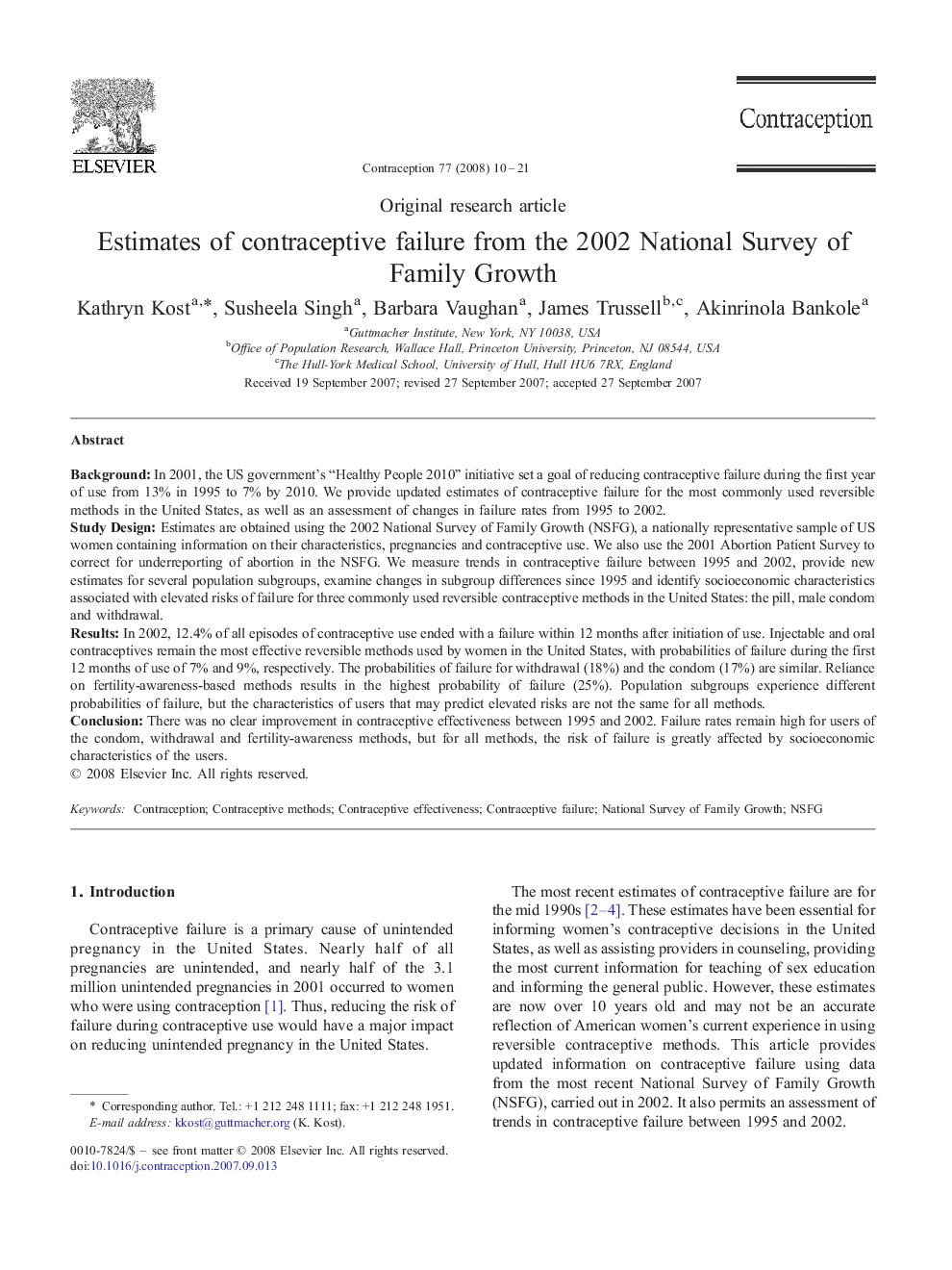| کد مقاله | کد نشریه | سال انتشار | مقاله انگلیسی | نسخه تمام متن |
|---|---|---|---|---|
| 3915881 | 1251522 | 2008 | 12 صفحه PDF | دانلود رایگان |

BackgroundIn 2001, the US government's “Healthy People 2010” initiative set a goal of reducing contraceptive failure during the first year of use from 13% in 1995 to 7% by 2010. We provide updated estimates of contraceptive failure for the most commonly used reversible methods in the United States, as well as an assessment of changes in failure rates from 1995 to 2002.Study DesignEstimates are obtained using the 2002 National Survey of Family Growth (NSFG), a nationally representative sample of US women containing information on their characteristics, pregnancies and contraceptive use. We also use the 2001 Abortion Patient Survey to correct for underreporting of abortion in the NSFG. We measure trends in contraceptive failure between 1995 and 2002, provide new estimates for several population subgroups, examine changes in subgroup differences since 1995 and identify socioeconomic characteristics associated with elevated risks of failure for three commonly used reversible contraceptive methods in the United States: the pill, male condom and withdrawal.ResultsIn 2002, 12.4% of all episodes of contraceptive use ended with a failure within 12 months after initiation of use. Injectable and oral contraceptives remain the most effective reversible methods used by women in the United States, with probabilities of failure during the first 12 months of use of 7% and 9%, respectively. The probabilities of failure for withdrawal (18%) and the condom (17%) are similar. Reliance on fertility-awareness-based methods results in the highest probability of failure (25%). Population subgroups experience different probabilities of failure, but the characteristics of users that may predict elevated risks are not the same for all methods.ConclusionThere was no clear improvement in contraceptive effectiveness between 1995 and 2002. Failure rates remain high for users of the condom, withdrawal and fertility-awareness methods, but for all methods, the risk of failure is greatly affected by socioeconomic characteristics of the users.
Journal: Contraception - Volume 77, Issue 1, January 2008, Pages 10–21